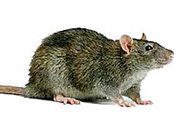Why Norway Rats And House Mice Prefer To Live In Urban And Suburban Areas
A “pest” is any animal species that is not wanted in human settings. Pests may be damaging to property, medically threatening, harmful to pets, annoying, and/or aesthetically displeasing. With the exception of being harmful to pets, it could be argued that Norway rats and house mice fit all of the above categories of pest. These two rodent species are certainly not attractive, as rats are covered in coarse brownish-grey hairs, while house mice have tiny eyes and are widely considered to be the only ugly mouse species. Rats and mice both damage property to gain entry to homes, build their nests, and gain access to food sources. They are also in the habit of chewing on electrical wires in wall voids, which is believed to be a leading cause of housefires. Rats and mice are definitely medically harmful, as both spread more than 35 diseases, and they contaminate food with Salmonella and E. coli. Unfortunately, rats and mice are also “commensal pests,” which means that they live in close association with humans because doing so is more advantageous than dwelling in the wild.
Rats and mice thrive in urban and suburban areas because housing and building architecture provides ubiquitous shelter where predators and extreme weather conditions can be avoided, and where breeding rates skyrocket. Perhaps most important, urban and suburban areas provide rats and mice with an abundance of food and water sources. For example, irrigated lawns and parks can sustain enormous rodent populations, and urban and suburban areas are less windy and warmer than rural areas.
Unfortunately, Rochester is one of the most rat-infested cities in the United States. Two years ago, Rochester was ranked 39th on a list of 50 cities where rat control services are busiest. Last year, Rochester dropped to number 46, but residents have failed to notice a decrease in rat pest issues. Some homeowners have described brazen hordes of rats emerging from sewers and roaming residential areas with an unusual degree of boldness. Rats are best controlled with well planned baiting programs, snap traps, and patience. It is also important to seal cracks, crevices and other potential entry points on the exterior walls of homes, and garbage and stored food should be well sealed.
Have you encountered rodents in your house or yard during the past year?


Comments are closed.